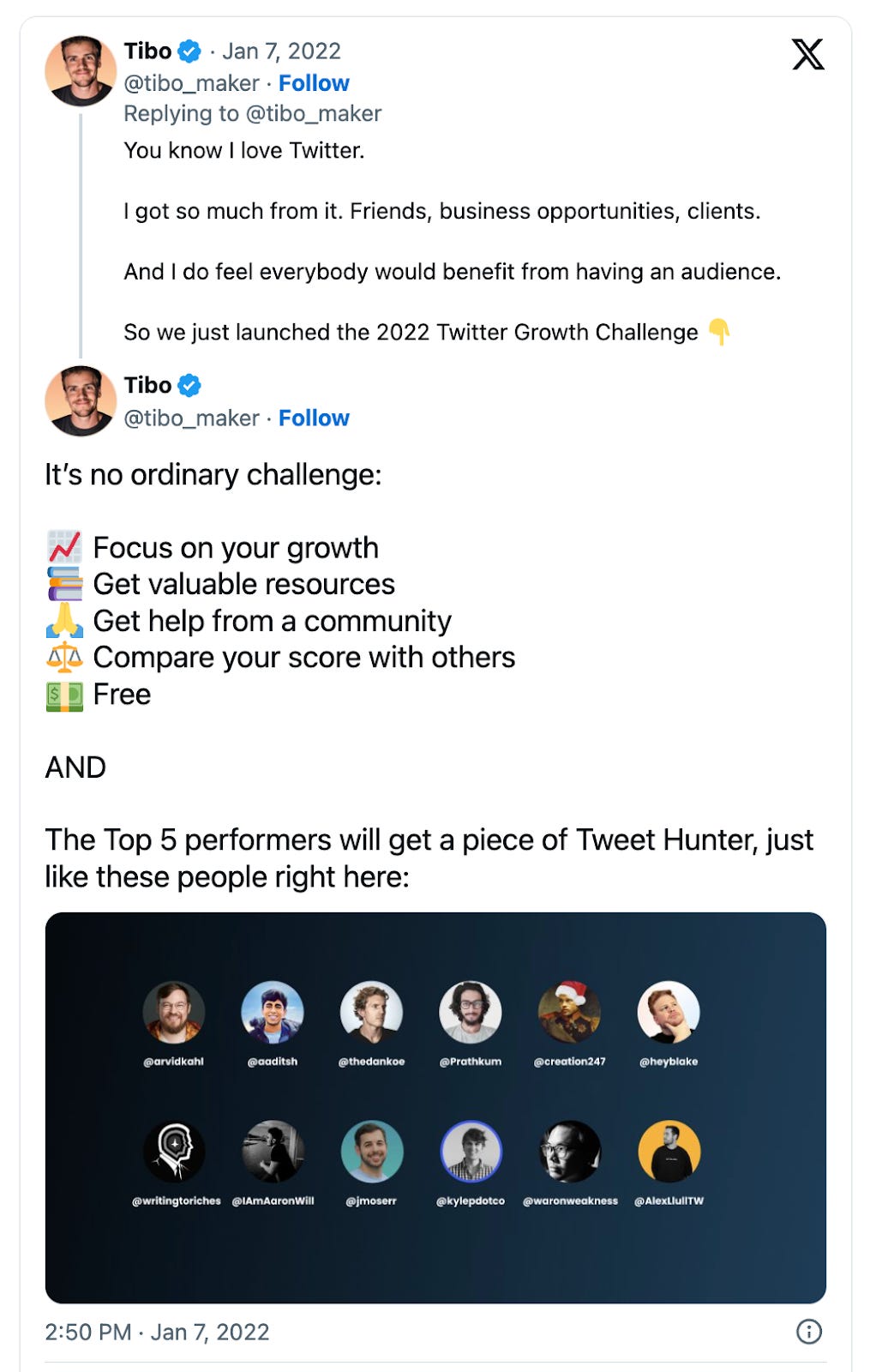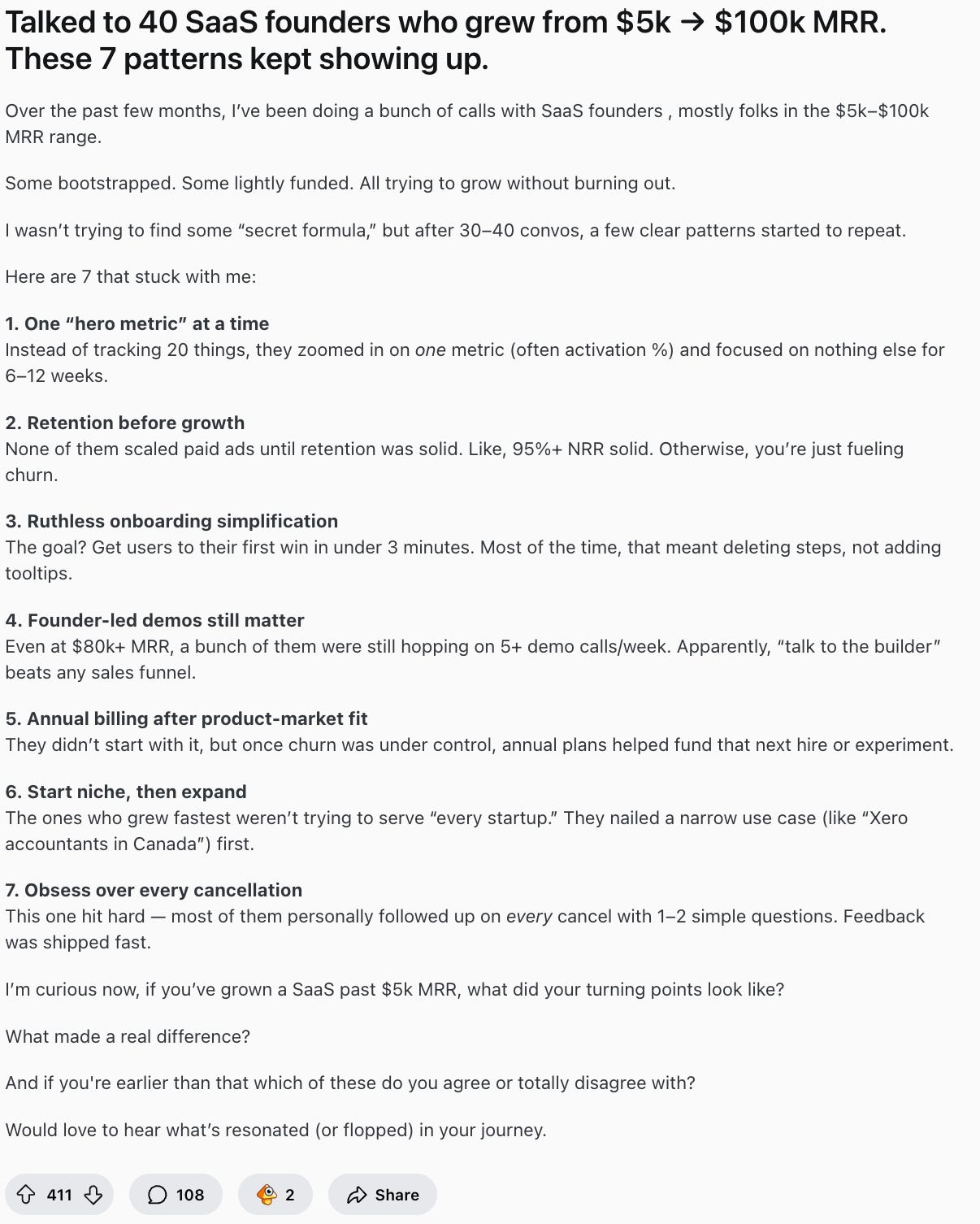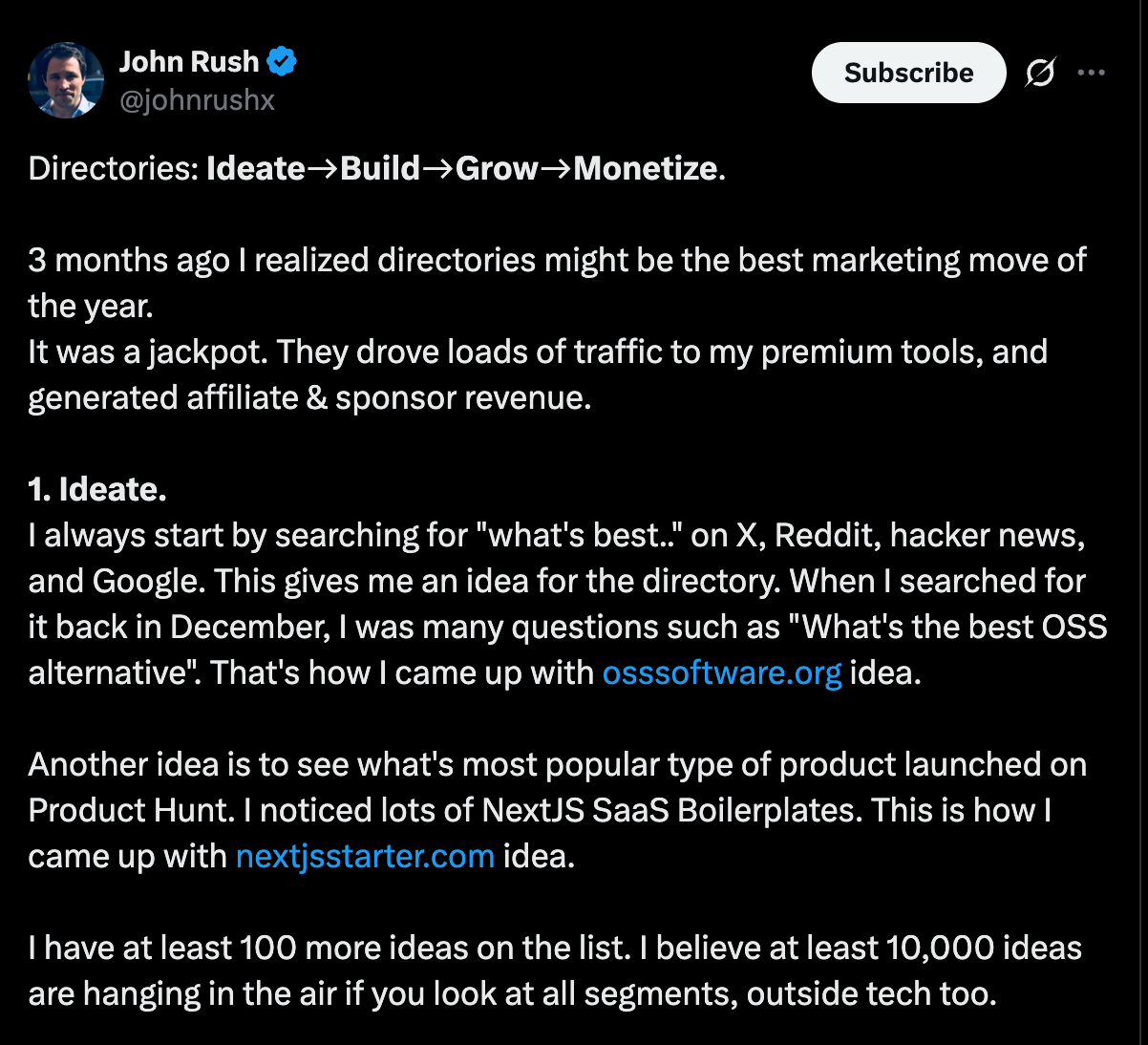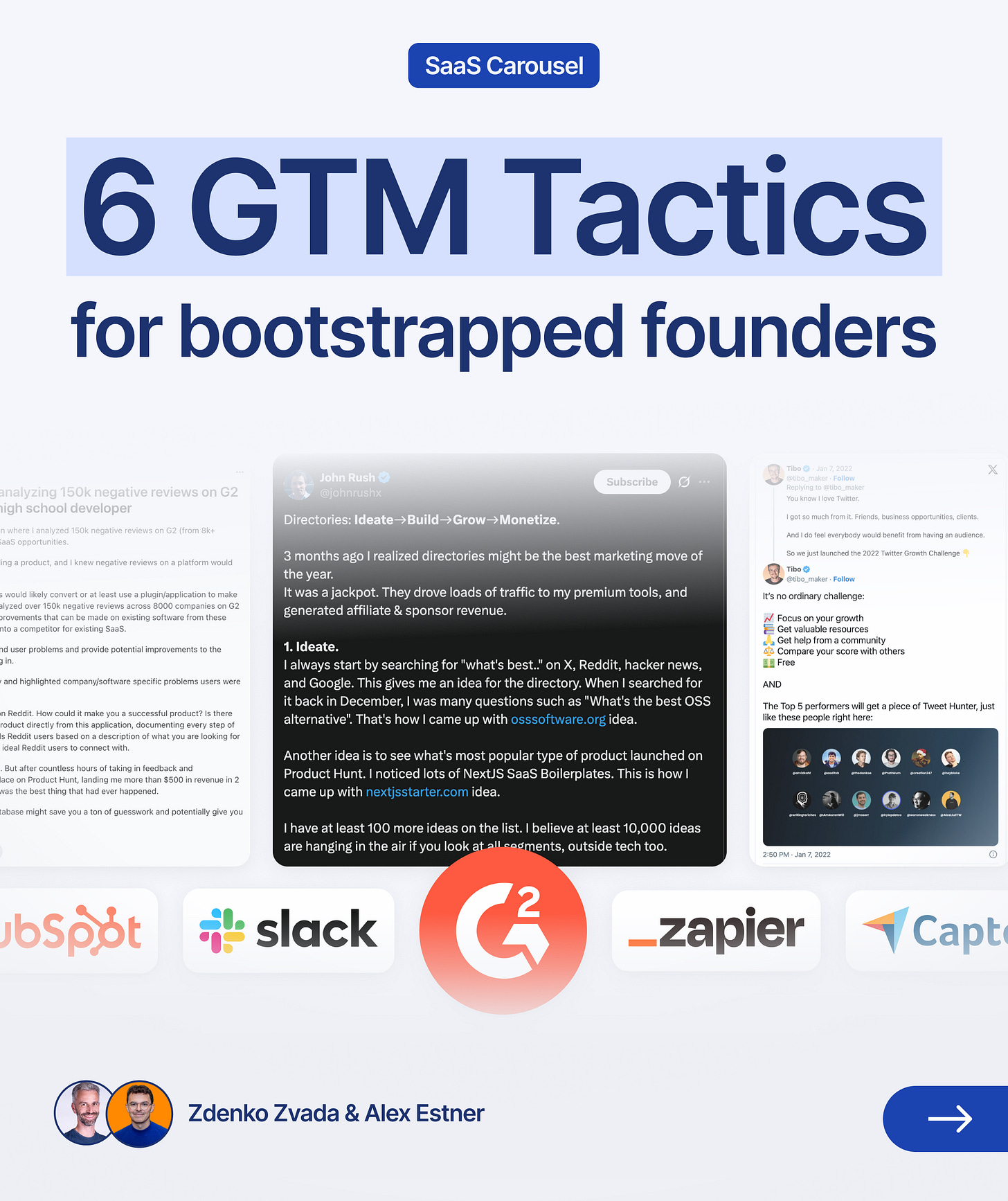6 GTM tactics that work surprisingly well for bootstrapped founders
The small, scrappy tactics that don’t usually make it into playbooks
Hey - it’s Alex, this time together with Zdenko Zvada, investor and operator backing (and buying) bootstrapped and “seedstrapped” SaaS businesses, and also the author of the seedtrapped newsletter!
Most GTM playbooks are written for venture-backed startups.
👉 Today, we break down 6 scrappy GTM tactics that work great for bootstrapped founders.
In case you missed the last 3 episodes:
✅ Why pitches fail (+11 slides to fix yours)
✅ The Ultimate Guide for your SaaS pricing page
✅ 9 GTM Inographics to hit first 1€ million ARR
👉 Reach 25.000+ SaaS operators with sponsored content. Sponsor the next newsletter.
In the past year, I’ve spoken with more than 300 SaaS founders, from tiny indie hackers to teams doing a few million ARR.
One theme has been coming up over and over: most GTM playbooks are written for venture-backed startups.
They assume big budgets and wide runways. Paid ads, sponsorships, big outbound teams.
If you’ve raised $5m, that advice can make sense.
If you haven’t, it can kill you.
That’s why I love Alex’s work here on MRR Unlocked. He’s broken down the fundamentals of GTM ICP messaging, outbound, content - perhaps better than anyone.
In this piece, I’d like to add the other half of the story: the small, scrappy tactics that don’t usually make it into playbooks, but keep showing up in conversations.
Here are six I think deserve more airtime.
1. Mine negative reviews for leads
Every 1-star review is a free lead. It tells you exactly who’s unhappy, why, and what they’d pay to fix.
This tactic is especially powerful in “crowded markets.” VCs usually avoid them - too much competition, too little room to stand out. But if you’re bootstrapped, crowded markets can be goldmines. They prove one thing: there’s demand.
The challenge isn’t demand. It’s differentiation.
And the fastest way to find your edge is to study where incumbents fail. Negative reviews give you that roadmap.
How you can apply this:
Search G2/Capterra/Reddit for competitors.
Filter for 1–2 star reviews.
Copy recurring pain points into a sheet.
Build a lead list from reviewer names/companies.
Reach out directly with something like:
“Saw you struggled with X. We built Y to solve it - want me to send few slots for a quick demo?”
This founder on Reddit even analyzed 150k negative reviews across 8,000 SaaS companies to find opportunities. (Source)
ℹ️ P.S. Check out the Social Listening Guide to learn more about it.
2. Go where the micro-communities live
Big campaigns don’t drive early traction. Small, trusted groups do.
I’ve lost count of the number of founders who told me, “Our first 100 customers came from Reddit or Slack groups.”
How you can do this right now:
List 3–5 small Slack, Discord, or subreddit groups your ICP hangs out in.
Join and spend a week answering questions/helping.
Share a free resource or guide that solves a pain point.
Mention your product naturally when it fits.
DM engaged members with a trial link or invite.
🔗 Example AMA: “I got my first 100 users through Reddit, Discord, and word of mouth.”
3. Collaborate with niche influencers
The best collaborations aren’t with big-name influencers. They’re with the people who have the right type of followers.
Case in point: Tweet Hunter. They launched on Twitter, then gifted free accounts to micro-creators like JK Molina. It drove credibility and signups faster than any ad spend could have. Source
Here’s how you can go about this today:
Identify 5–10 micro-influencers (500–5k engaged followers) in your niche - look on Twitter, LinkedIn, Substack, or small podcasts.
Offer free access to your product (or a perk/credit) in exchange for them trying it out. Make it easy to promote - give them a unique link, landing page, or discount code.
Suggest a simple collab format (guest post, AMA, short webinar, or co-tweet/post).
Track results with UTM links and coupon codes so you know which partnerships work.
Double down on the 1–2 influencers that actually convert, instead of spreading thin.
👉 Reach 25.000+ SaaS operators with sponsored content. Sponsor the next newsletter.
4. Extend founder-led sales
One of the biggest mistakes I see founders make is to hire their first sales rep too early. Especially those coming from VC-backed companies, just because they can afford it.
This Reddit thread summarises 40 SaaS growth stories, where the common pattern was founder-led demos well past $1m ARR.
It’s not just about saving money. Every call is both revenue and feedback. Cut that loop too early, and you fly blind.
Here’s how I’d do sales if I were to start my own business today:
Block 5-10 hours/week for direct demos or discovery calls.
Use Notion/Google Sheet to track every conversation.
Note recurring objections or questions.
Update your pitch/product to address them.
Keep selling yourself until you’re repeating the same script consistently and can confidently close most of your demos
5. Build education-first funnels
Teaching is cheaper than advertising. Bootstrapped teams turn playbooks, quizzes, or email courses into acquisition engines.
One founder described a simple funnel: “We ran a 5-day email course, then followed up with tailored outreach based on what people answered.” Conversion rates beat cold outbound by a wide margin.
Big SaaS companies do this at scale (HubSpot’s Website Grader is the classic), but bootstrapped founders use it too - just in leaner form.
How you can do this:
Pick a painful question that your ICP Googles.
Create a short email course, checklist, or quiz that answers it.
Gate it with a simple signup form.
Follow up with tailored advice + product demo.
Repurpose it into blog posts or social snippets for ongoing traffic.
ℹ️ P.S. Check out the Lead Magnet Guide to learn more about it.
6. Directories - get listed (or build your own)
Directories are probably the most underrated GTM tactic. Most founders think about them only as “nice-to-have” visibility. In reality, they’re one of the most capital-efficient GTM channels you can tap into early:
Get listed:
Being on Capterra, G2, Product Hunt, AppSumo, Zapier Marketplace, Shopify App Store, HubSpot Marketplace (and niche equivalents in your vertical) puts you directly in front of buyers with intent.
A well-optimized listing with a handful of strong reviews can rank above better-funded competitors who are ignoring these channels.
Founders I’ve spoken with often credit their first 50–100 paying customers to a Product Hunt launch or an early directory push.
Build your own:
John Rush’s insight: don’t just get listed - build directories yourself. He launched 20+ directories, with 5 of them becoming the go-to resources in their niches.
Directories become distribution assets: they rank on Google, attract your ICP, and you can monetize them via sponsorships, affiliate links, or by funneling traffic into your own product.
How to apply (5 steps)
Audit directories in your space (general + niche). Make a hit list of the top 10.
Submit your product with ICP-focused copy + 2–3 strong screenshots.
Ask customers for reviews early (offer credits or perks in exchange).
Track conversions via UTM tags or dedicated landing pages.
Optional: If you see a gap, launch your own micro-directory (e.g. “Best AI tools for X” or “No-code tools for Y”). Use Webflow/Framer + Airtable to get live in days.
The pattern
Bootstrapped GTM isn’t about doing less. It’s about doing the things VC-backed teams can’t be bothered with:
Listen to where competitors fail.
Embed in tiny communities.
Partner with trusted micro-voices.
Keep selling yourself.
Teach before you pitch.
Get listed (or list others)
These tactics won’t get you TechCrunch headlines. But they will get you something more important: durable growth, paying customers, and independence.
That’s the kind of GTM that compounds. And from what I’ve seen across 300+ founder conversations, it’s where the real advantage lies.
Share the tactics that work for you with us on LinkedIn.
Happy growth 🚀
P.S. If you want more of Zdenko's content on bootstrapping and seedtrapping, connect with Zdenko on LinkedIn and subscribe to his Seedstrapped newsletter.
3 ways I can help you grow your SaaS to €1 million ARR 👇
1️⃣ Use my free GTM library with 50+ free resources (guides, templates, workbooks, and tools) to build a strong GTM foundation (helped 5000+ SaaS leaders)
2️⃣ Get a 360° GTM audit of your status quo + a custom 6-month action plan
3️⃣ Work 1-on-1 with me - GTM Advisory for SaaS founders from €0 to €1 million ARR













Love this!